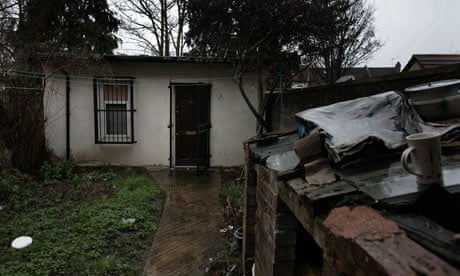We all know the English like to think of their homes as castles. But according to a report by the Royal Institute of British Architects, "dungeon" could now be a more fitting medieval analogy. The architect's professional body has produced a report called The Way We Live Now, a study of what people want out of their homes and how they're using them. What leaps out from its pages is the gap between expectations and reality: people want "large windows for natural light", a "large main living area for eating and socialising" and crucially "space for private time away from other members of the household".
It's wishful thinking, of course, for most of us. The report, based on interviews with a few carefully selected families, suggested people lack space to store even basic items. Vacuum cleaners seem to be a particular problem, with one household storing theirs at mum's house down the road, another awkwardly in the downstairs bathroom. Kitchens didn't have room for washing machines or dustbins. When there's hardly even room for a hoover, space for private time begins to seem like an impossible luxury.
It's nice that Riba's taking an interest, but is this a problem that its members can solve? There's a strong argument for taking these findings into account when drawing up building regulations. But the issue is so clearly an economic one, it's difficult to see what difference architects and designers can make.
With social housing stocks falling (there were 1.73m units in April 2011, compared to 2.81m in 2001), and well-proportioned private accommodation way out of most people's reach (the average house-price to earnings ratio is still over 4:1), there's huge pressure on space. People are forced to sacrifice those hankered-after square feet simply in order to have a roof over their heads.
London is the starkest example. The BBC's extraordinary aerial footage of illegal accommodation in gardens in parts of the capital brings home the social cost of the property boom. The Guardian recently reported on desperate tenants shelling out £350 every month to rent sheds. We seem to be facing the appalling prospect of returning to a time before the social house-building programmes of the 20th century, when British cities hosted slums of the kind we now associate with grossly unequal societies such as Brazil.
But if there's one glimmer of hope for architects in this report, it's that participants said the "feel" of a home was more important than its functionality. The attention to detail, light levels, the "atmosphere". This is something good designers can help with, even in the worst of economic times. "Feel" cuts both ways, however. Bad housing, even if there is enough space, can affect wellbeing in a profound way.
What are your experiences? Do you have enough room to live?

Comments (…)
Sign in or create your Guardian account to join the discussion